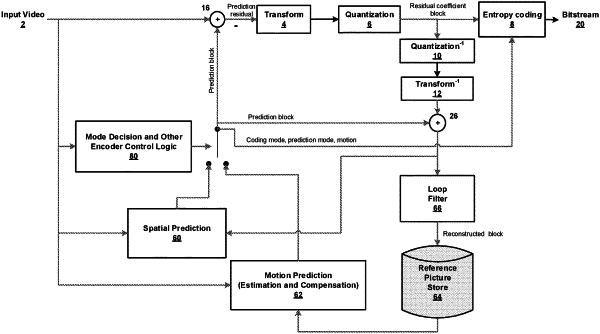| CPC H04N 19/52 (2014.11) [H04N 19/147 (2014.11); H04N 19/176 (2014.11)] | 20 Claims |

|
1. A video encoding device comprising:
a processor configured to:
during a first partition type check, partition a parent block using a first tree partition to obtain a first coding block;
perform affine motion estimation associated with the first tree partition to derive, for the first coding block, a first motion vector (MV) set;
add the first MV set to a recently-estimated MV list, wherein the recently-estimated MV list comprises a plurality of MV sets derived by performing affine motion estimation associated with the parent block;
during a second partition type check, partition the parent block using a second tree partition to obtain a second coding block;
select, for the second coding block, a starting point for affine motion estimation based at least in part on an MV set in the recently-estimated MV list and an MV predictor; and
perform affine motion estimation associated with the second tree partition to derive a second MV set for the second coding block based on the selected starting point.
|